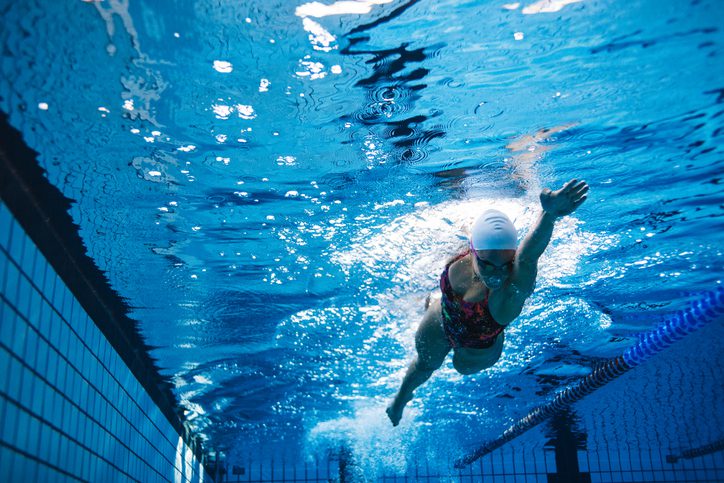The benefits of doing anaerobic alactic swim workouts
Having speed in the water can make a significant difference to the overall outcome of your swim. Here are three example sets you can do.
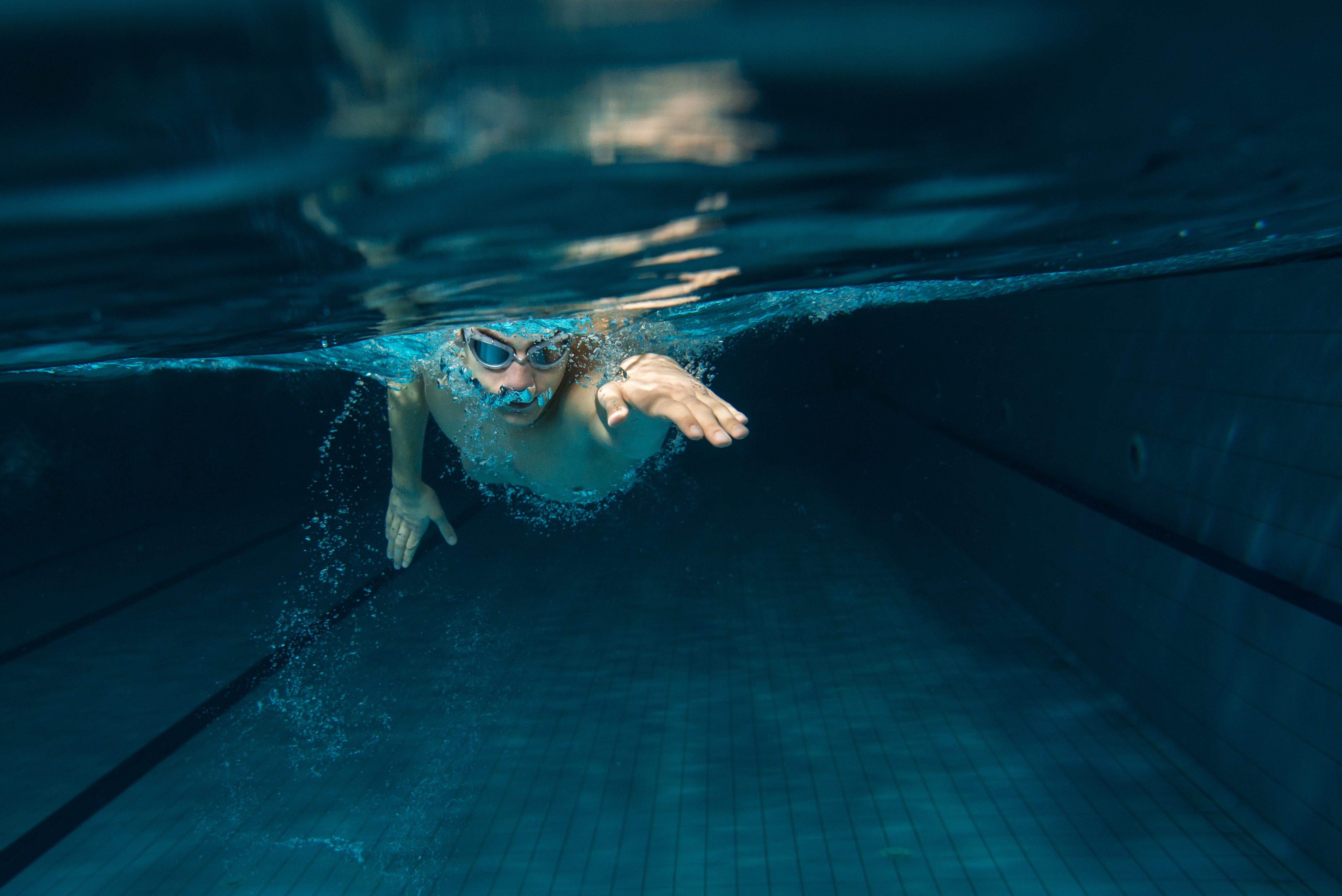
Speed training in the pool is often disregarded by triathletes. This is a huge oversight: having speed in the water can make a significant difference to the overall outcome of your swim.
There are three physiological systems that work together throughout the swim; anaerobic alactic, anaerobic lactic, aerobic.
- The anaerobic alactic is the fastest and most powerful system. This system works without oxygen, doesn’t produce lactic acid and lasts for 6-15 seconds.
- The anaerobic lactic works without oxygen, produces lactic acid and lasts about 2 minutes.
- The aerobic system uses oxygen and is the main engine used for efforts over 4 minutes.
Related: Wanna swim faster? Then swim faster!
For the sport of triathlon, the majority of your swim workout should be focused on building your aerobic capacity. This means that you should be swimming intervals that are over 2 minutes in length and at threshold pace or slower.
There are, however, substantial benefits to be had from training the anaerobic systems, specifically the anaerobic alactic system. Despite not being a common practice among triathletes, or unknown to many, you may find some unexpected gains by training the anaerobic alactic system.
The beauty of using this particular system strategically in races is that it can recover and be ready to be used again within a minute. There are four strategic areas where you can use your anaerobic alactic system.
Give’r from the gun: in the sport of triathlon, it is beneficial to be able to sprint at the start in order to be able to draft someone who is slightly faster than you. It doesn’t make much sense to dawdle at the start and draft someone who is the same speed as you. Sprinting at the start may also allow you to get into clear water faster and avoid the washing machine that is the start of most races.
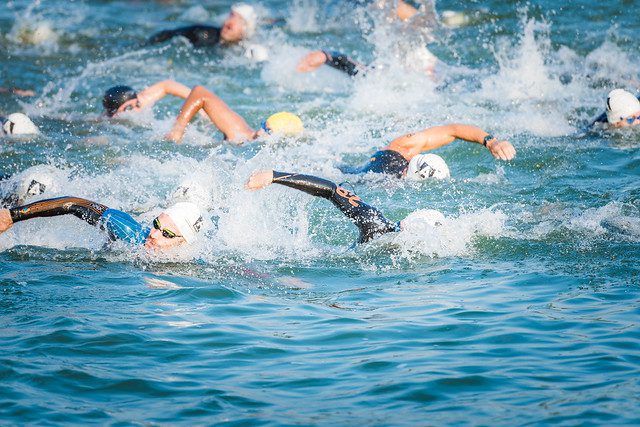
Beating the buoys: going around the buoys is arguably one of the most frustrating things during the swim. This part of the race can be made much more enjoyable by being able to accelerate into and out of the corners. By training your swim speed and power you may be able to avoid some of the slow-downs that happen because of the bottlenecking at buoys.
Hitching a ride: it may happen that you get passed in a race. You can turn this situation into an opportunity if you are able to accelerate for 10-30 strokes and hop into the draft.
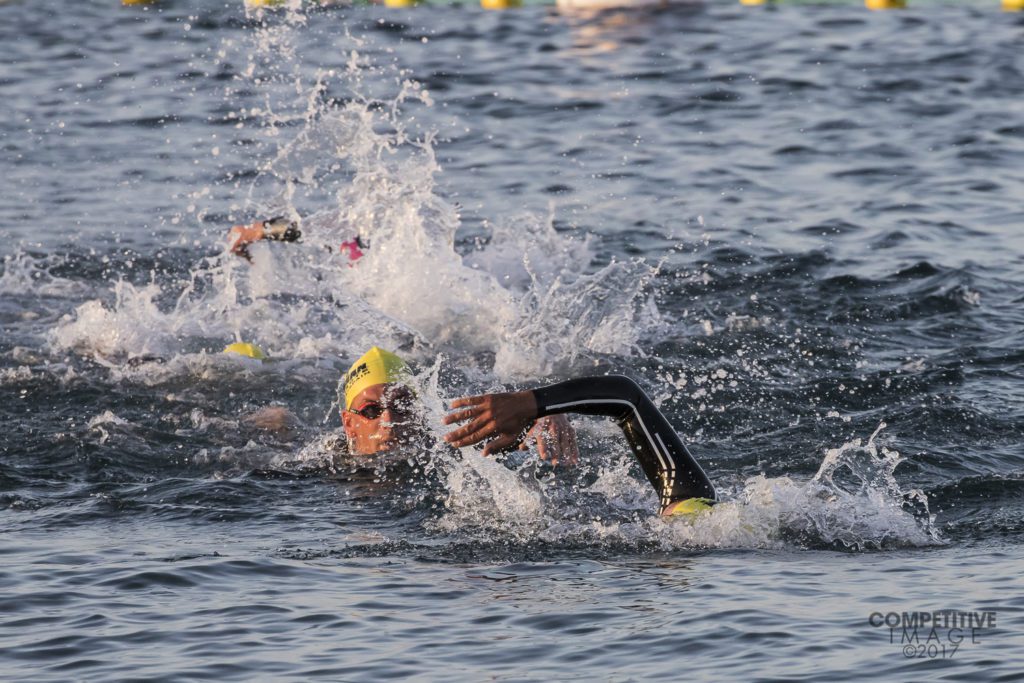
The finish: sprinting is probably the last thing you feel like doing at the end of ANY triathlon swim (regardless of distance). Having the ability and confidence to put in a final surge can benefit you more than you would think. The advantages of being the first of your pack to exit the water are varied depending on the race. They can be anything from being able to choose the strongest looking wetsuit stripper, to getting into an uncrowded T1, to not missing the pack in draft legal races.
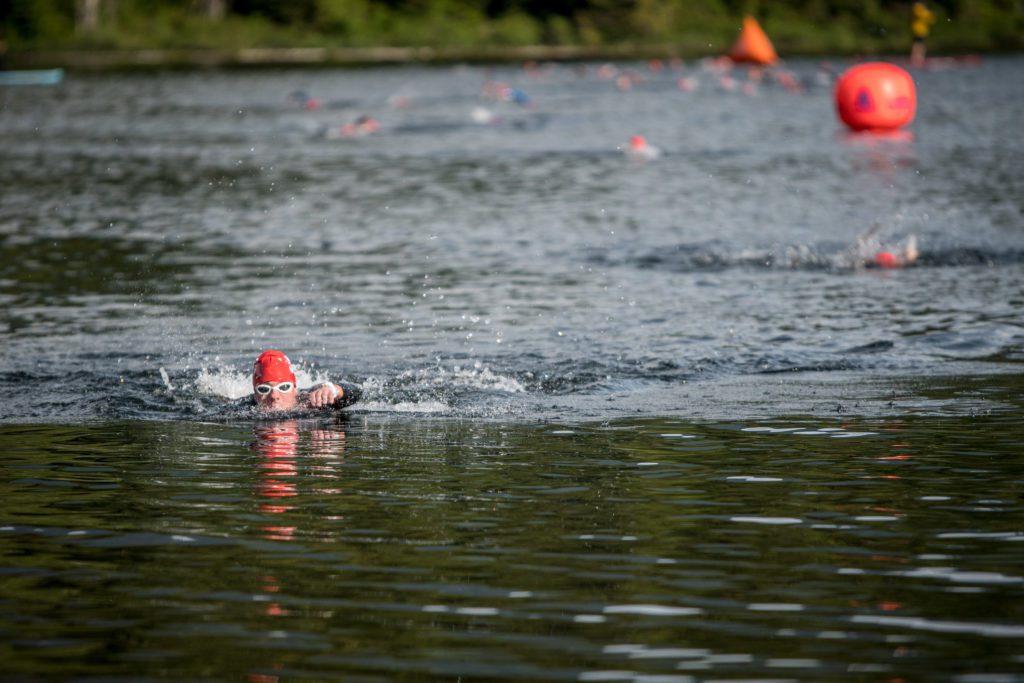
If you have the speed and power to excel in these tactical areas you may see huge improvements to your swim times.
How to incorporate speed into your swim training
The hardest part of swim speed training is doing it. There are two reasons for this: as endurance animals, triathletes have a hard time working with perceived efforts of 9/10 and 10/10. This is often untrained and scary realm is a necessity when training your anaerobic systems. The second is that to get the training benefits from sprinting you need to rest in between intervals. Rest is often times seen as a waste of time by time-pressed triathletes. Ensuring that you are working with a minimum 1:1 work to rest ratio ensures that you are getting the maximum benefit for your efforts.
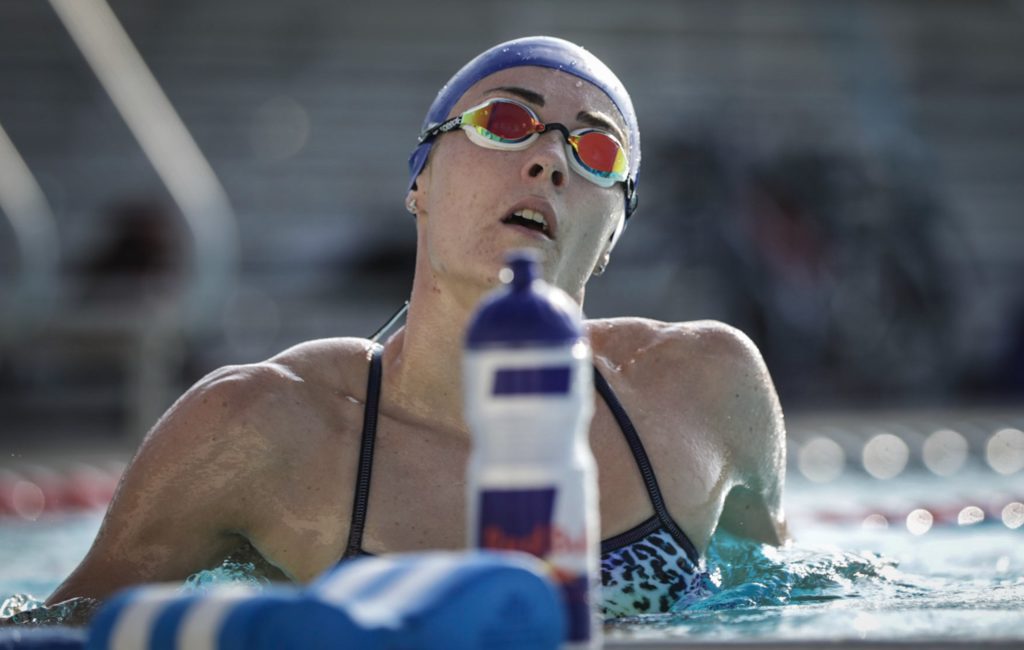
Triathletes looking to incorporate anaerobic alactic speed training need to note that the key to sprinting is to maintain good form with increased turnover. You must practice perfect form at slow speeds before you can expect to hold your form at high speeds. Start by sprinting short distances of 5 to 10 arm strokes and build up to 25 m (for beginners) and 50 m (for experienced swimmers). Remember that your alactic system works for a maximum of 15 seconds so that you will most likely start to tap into your anaerobic lactic system at the end of 25 or 50m. I am suggesting intervals of 25 or 50m so that you can measure your improvement using time.
It is essential that you warm up properly for speed sessions. Your warm-up should be at least 20 minutes, should include some kick and needs to warm-up both your aerobic and anaerobic systems. During your warm-up ensure that you do some form drills as well as a few 25s or 50s building to 80% effort.
For variety, you can do some of your alactic training using fins. Rember to work the alactic system you need to focus on intervals that are less than 30 seconds.
Three alactic swim sets
| Set | Description | Additional notes | |
| 6-12X50m with 30-sec rest | 5-12 powerful, fast strokes. The rest of the 50m easy, with a perfect stroke | You can gradually increase the number of fast strokes with each repetition. To simulate a triathlon, start the 50m without pushing off the wall; either from a floating vertical or horizontal position | |
| 6-12X25m with 30-sec rest or6-10X50m with 1 min rest | Each interval is as fast as you can go. Perceived effort should be 9-10 out of 10 | To increase your power you can gradually build to doing half or all of these with paddles | |
| Fartlek 25s | Alternate really fast 25m with an easy 25m or 50m | You need to feel a definite difference in kk speed, arm speed and applied power between the fast and easy sections. This is a good set for which to use fins |
